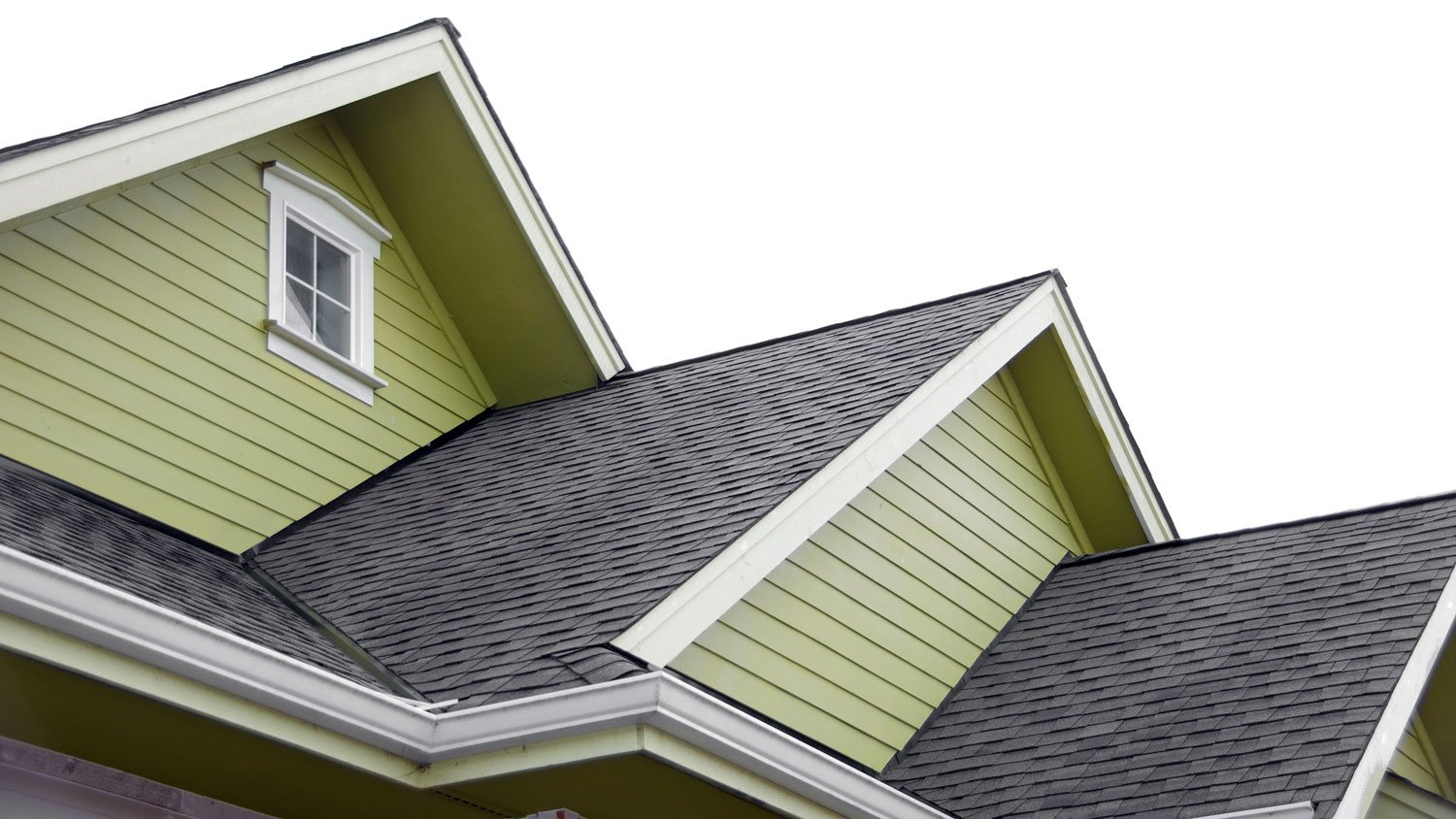
Dealing with a visibly damaged roof or leak? Learn about roof repair costs in Columbus to see how much you’ll need to budget for a permanent solution.
Roof eaves protect your home from water damage and enhance its visual appeal


Eaves protect your home from water damage and provide shade.
There are four main styles of eaves, each used for different home types and aesthetic preferences.
Eaves need to be regularly maintained to work properly.
Your home’s roof is made up of various components that work together to protect it from weather and other damage. Roof eaves play an important role in this protection, overhanging the side of the house to provide shade, help water runoff, and protect your siding and foundation from damage. Learn more about eaves and why they’re so important to your home’s safety and stability.
A roof eave is the edge section of the roof that overhangs the side of the house, extending out anywhere from 12 to 36 inches or more from the house’s outer walls. They direct water away from the side of the house, protecting the walls and foundation from water intrusion.
In sunny areas, eaves also provide sun protection, preventing the hot sun from beating down directly onto the siding and into windows. Eaves also contribute to your house’s aesthetic appeal, complementing its style and boosting its curb appeal.
Eaves are often confused with other parts of the roof, like soffits and fascia, which are found in the same area of the roof but play very different roles. The soffit attaches to the eave on the underside, covering exposed rafters and providing a finished look to the eaves. Fascia are boards installed at the edge of the eaves, protecting the ends of the rafters and providing a surface to attach gutters.

Not all eaves are the same—they vary based on the style of home as well as the homeowner’s aesthetic preference. There are four main types of eaves: open, closed (also called soffited), abbreviated, and boxed.

Open eaves don’t have a soffit, so the underside of the eave exposes the rafters. Open eaves are often found in rustic or cabin-style homes.
Closed or soffited eaves have a soffit installed on the underside of the eave, providing a finished look and protecting the rafters. Closed eaves are a popular choice in more traditional-style homes like colonials or Cape Cod-style houses.
Abbreviated eaves are much shorter than traditional eaves, sometimes extending only a few inches past the exterior walls. Abbreviated eaves are often found on modern or minimalist-style homes.
Boxed eaves have an attached soffit as well as ornamental molding to fully enclose the eave, leaving only small holes or slits for ventilation. Boxed eaves offer a sleek, polished option for homeowners who prefer a fully finished look.
Eaves are an important part of protecting your home, but they do come with some drawbacks. Let’s take a look at how the benefits and drawbacks stack up against each other.
| Pros | Cons |
|---|---|
| Protection from water damage to walls and foundation | Can contribute to roof uplift in high winds |
| Provide shade and protect siding from UV damage | Provide protected spots for birds and pests to build nests |
| Ideal place to mount gutters, lights, and security cameras | Prone to mold and moss growth |
Like any other part of your roof, eaves require maintenance to keep them functioning properly.
Regularly inspect eaves for debris, moss, mold, or evidence of pest activity.
Hire a roofer for an in-depth inspection if you notice any problems with your roof or eaves.
Clean gutters regularly to prevent excess weight from damaging the eaves.
If you notice cracks, holes, or discoloration on your eaves, contact a local roofer to repair the problem before it becomes more serious.
Paint any exposed parts of the eaves, soffits, and fascia every three to five years to protect against deterioration and keep your eaves looking fresh. Budget for the cost of fascia or soffit repair or replacement if the materials have deteriorated.
From average costs to expert advice, get all the answers you need to get your job done.

Dealing with a visibly damaged roof or leak? Learn about roof repair costs in Columbus to see how much you’ll need to budget for a permanent solution.

Learn about roof replacement costs in Columbus and what factors are at play to budget accurately and make sure you’re getting a fair price.

A metal roof can defend your home against Ohio’s varying weather conditions. Learn how much a metal roof costs in Columbus, OH.

Learning how to cut rafters correctly for your roof strengthens your building’s frame. We’ll explain everything you need to know, including the birdsmouth cut.

If you’re an experienced roofing DIYer and want to tackle learning how to seal a roof, this guide will help you navigate all the different steps.

A leaky roof is less than ideal. Learn how to patch a roof while you wait for repairs from the pros to prevent further damage to your home.